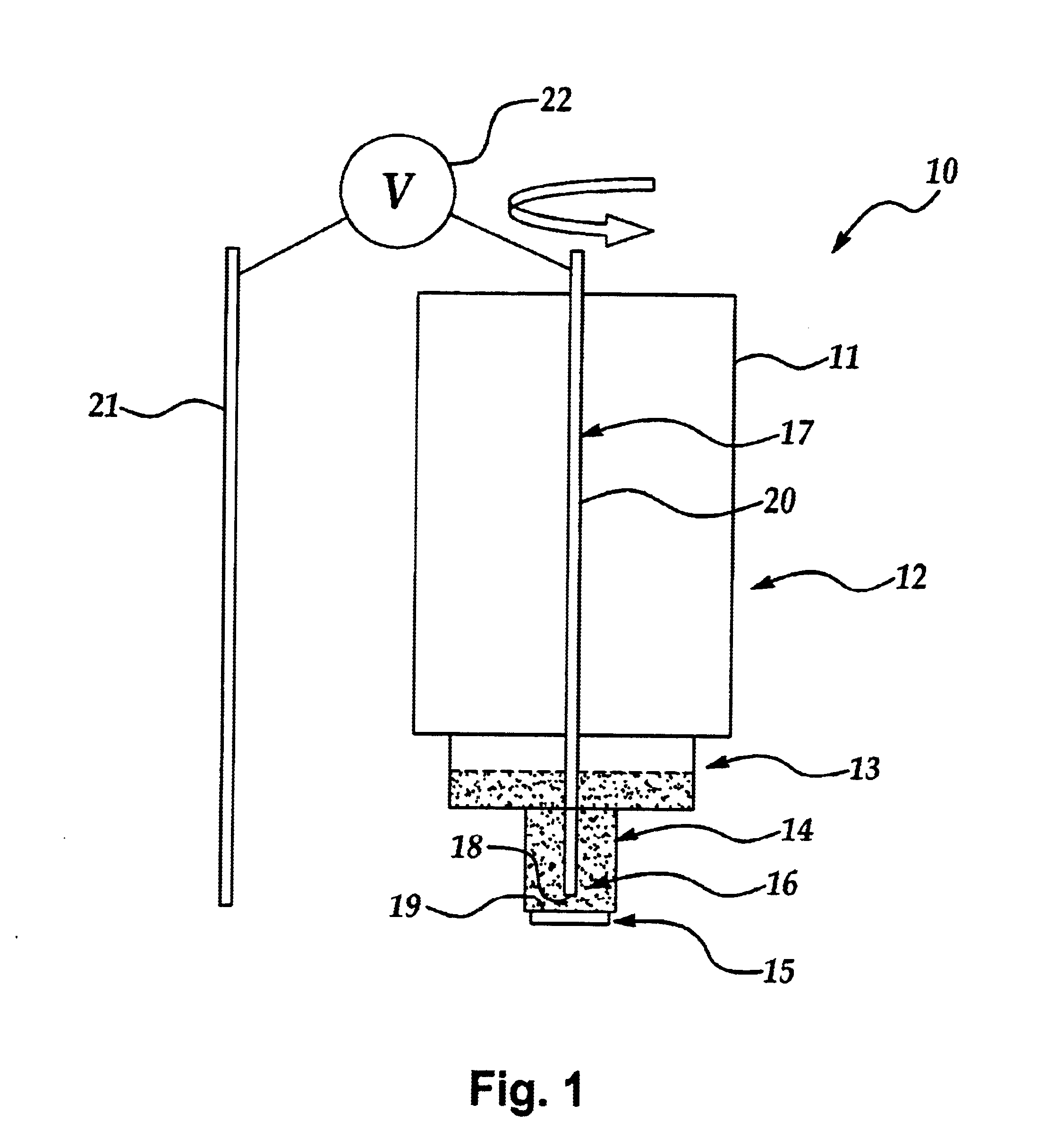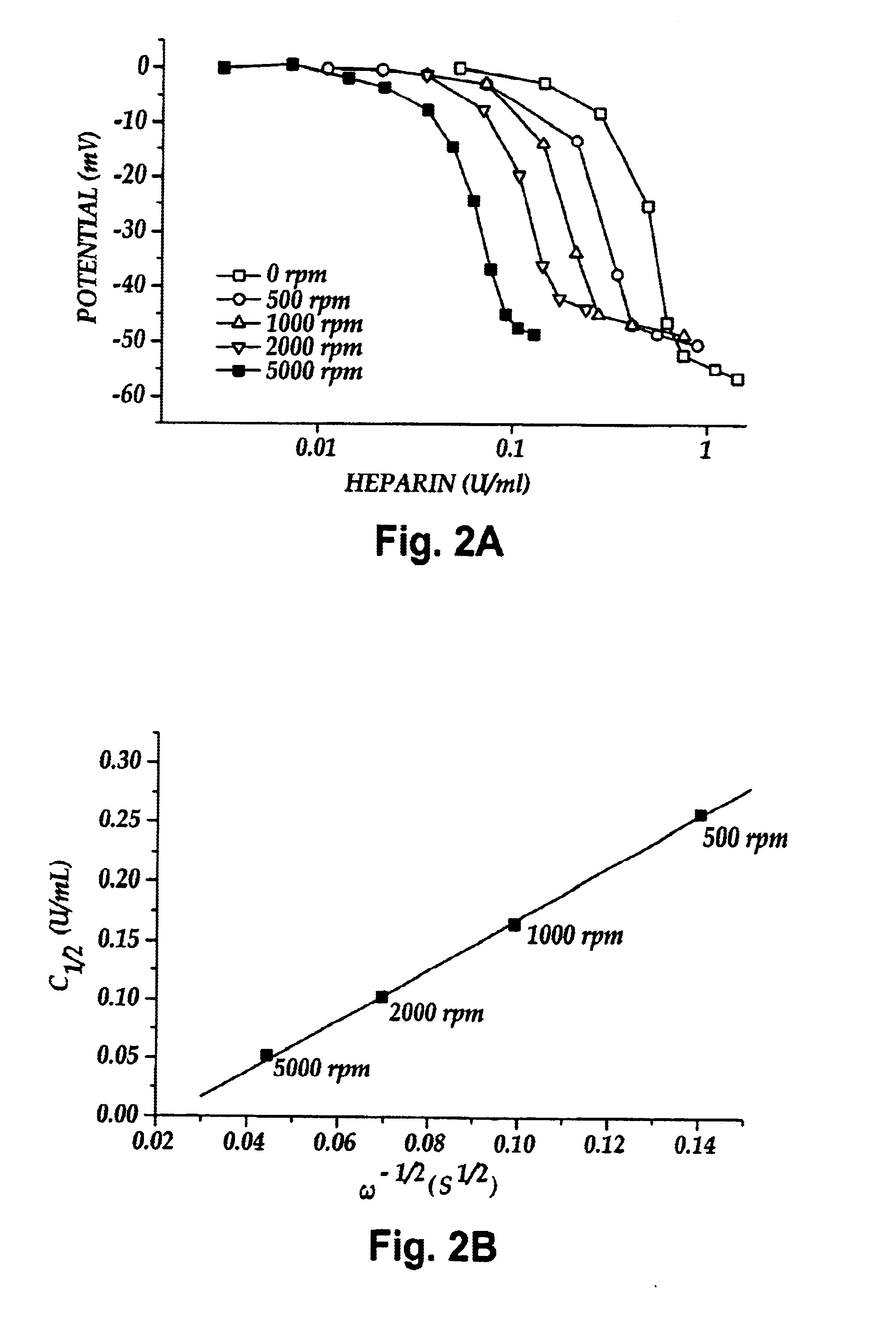Rotating potentiometric electrode
a potentiometric electrode and potentiometer technology, applied in the direction of liquid/fluent solid measurement, instruments, electrochemical variables of materials, etc., can solve the problems that the potentiometric technology of rotating electrodes has not been applied heretofore, and achieve the effects of improving sensitivity, improving mass transfer of polyion, and low rotational speed
- Summary
- Abstract
- Description
- Claims
- Application Information
AI Technical Summary
Benefits of technology
Problems solved by technology
Method used
Image
Examples
Embodiment Construction
[0035]Membrane and PSE Electrode Preparation
[0036]In a specific illustrative embodiment of the invention, polyanion-sensitive membranes, specifically heparin-sensitive membranes, were prepared by a cocktail solution casting method as described, for example, in Mathison, et al., Anal. Chem., Vol. 71, pages 4614-4621 (1999) or any of the patents referenced herein. The cocktail solution was prepared by dissolving the appropriate amounts of membrane components (polymer, plasticizer and ion-exchanger) into tetrahydrofuran (THF). The membranes were cast in a mold to a final thickness of about 150 μm and contained 1 wt % tridodecylmethylammonium chloride (TDMAC), 33 wt % dioctyl sebacate (DOS) and 66 wt % poly(vinyl chloride) (PVC).
[0037]In another specific illustrative embodiment, polycation-sensitive membranes, specifically protamine-sensitive membranes, were made by the same method but with the following polymeric membrane matrix composition: 1 wt % calcium dinonylnaphthalene sulfonate ...
PUM
| Property | Measurement | Unit |
|---|---|---|
| thickness | aaaaa | aaaaa |
| diameter | aaaaa | aaaaa |
| temperature | aaaaa | aaaaa |
Abstract
Description
Claims
Application Information
 Login to View More
Login to View More - R&D
- Intellectual Property
- Life Sciences
- Materials
- Tech Scout
- Unparalleled Data Quality
- Higher Quality Content
- 60% Fewer Hallucinations
Browse by: Latest US Patents, China's latest patents, Technical Efficacy Thesaurus, Application Domain, Technology Topic, Popular Technical Reports.
© 2025 PatSnap. All rights reserved.Legal|Privacy policy|Modern Slavery Act Transparency Statement|Sitemap|About US| Contact US: help@patsnap.com



